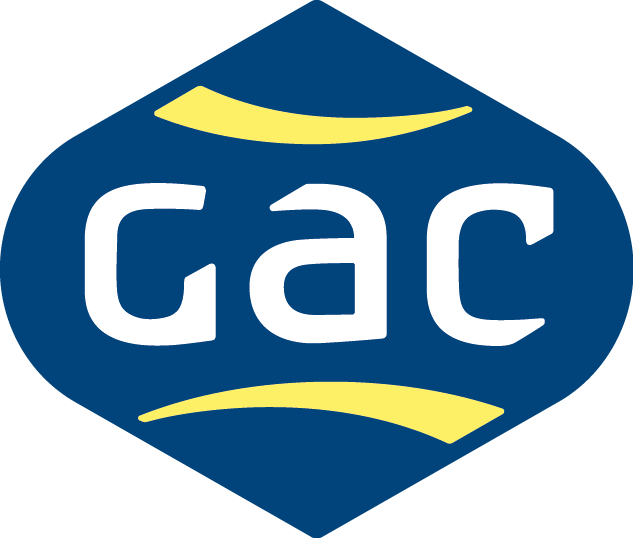Facilitating crew changes in Covid-19 times
- haugkristoffer
- 29. apr. 2021
- 4 min lesing
Oppdatert: 4. mai 2021

Since March 2020, when the pandemic hit the hardest, GAC Norway, and other ship agents, have spent a vast amount of time and effort keeping up with continuous changes in regulations.
As GAC Norway’s Covid-19 coordinator, Paal Stene, has faced many challenges. One of our most experienced ship agents, he has been working overtime for the last 11 months to ensure all staff are kept up-to-date with the latest changes and that crew changes can take place as efficiently as possible. In this article, you can learn about those challenges and what’s behind them, and also find useful links to the latest updates and more. Here at GAC Norway, we are very proud to have a Paal amongst our staff and to witness first-hand his resilience, skill and determination, and also determined in our support for seafarers as key workers.
Even though immigration regulations are largely the same as before Covid-19, the practical handling is challenging and requires a lot more follow-up and work than before. Since March 2020 there have been approximately 80 changes in the regulations for Norway, of which we estimate around 25% directly affected crew changes and servicing vessels. Between 2 and 29 January alone, there were five changes. For us agents, crew handling has by far been the most time-consuming aspect of ship agency since last March.
Norway is a country with a long coastline and 356 local municipalities. We have 11 police districts, each with an immigration officer (a member of the police) in charge of border control – at sea, in the air and on land. Each of the hundreds of municipalities, with coastline and harbours, also has a health officer who is responsible for infection control in their area. Because of this, responsibility for crew change, border control and infection control is very decentralised in Norway – even if the governing regulations are the same.
The Norwegian system delegates a lot of power, decision-making, and implementation of the regulations to the local immigration and health authorities. When this is combined with some 80 changes in the regulations over about ten months, some of which are open to varying degrees of interpretations, even the experts and authorities were sometimes struggling to elucidate the regulations and to keep themselves updated.
Another challenge has been that some authorities do not fully appreciate the critical need for crew change and service in a port. Protecting the local population is a priority; crew changes and vessel servicing in port are not. Some even banned crew change with very little legal footing. Consequently, it’s a challenge for a vessel calling at different Norwegian ports with the same purpose and the same crew, to find varying execution of the regulations between the different authorities.
Even so, generally speaking, crew change and vessel servicing vessel are handled efficiently, as long as the crew and owners plan ahead, allow enough time and provide proper documentation. Most glitches are usually solved by the owner, the crew, the ship agent and the authorities working closely together.
What is a “key worker”?
Crew with a Seafarer’s ID (SID) can embark or disembark a vessel in a Norwegian port. “Key workers” are people that carry out “critical public functions”, service, and inspections of a vessel. This is strictly upheld and cannot be used for routine work or work that can be postponed. It is for the owner to define and substantiate if a person’s work is regarded as “critical” and should be permitted to enter Norway or embark/disembark a vessel. The person will need to carry relevant documentation from his employer to prove this. It is then up to the immigration and/or health authorities to accept the person at the border for entry. In these circumstances, a critical worker can also be allowed to sail with the ship if required – even without an SID – and will still be classified as a seafarer as far as immigration and embarkation are concerned.
Some other personnel are also defined as key workers and critical to maintaining the flow and transport of goods. Their access to Norway and vessels in Norwegian ports is based on the scope of work and as above, if the work or inspection has to be carried out or can be postponed until further. The Norwegian authorities understand the importance of keeping vessels sailing with a skilled and motivated crew and with proper maintenance and inspections. GAC Norway can assist owners with further clarification and support where it’s needed.
The Neptune Declaration
Together with more than 600 other stakeholders at the time of writing, the GAC Group has signed the Neptune Declaration to encourage the designation as seafarers worldwide as key workers, promote seafarer wellbeing and facilitate crew changes – another example of our support for ship owners, charterers and crew. By signing the declaration, we acknowledge the critical work that seafarers do, and help to take care of the people doing that work.
We encourage our clients, partners and other stakeholders to do the same.
We also recommend you watch this short video, produced and distributed by BIMCO, for further understanding and with a request to help amplify this important message.
You can always find the latest updated procedures and other helpful Covid-19 information relative to Norway here and worldwide here.
With thanks to Henning Lien, Ole Fredrik Torpe and Lynne Clarke for editing


Kommentarer